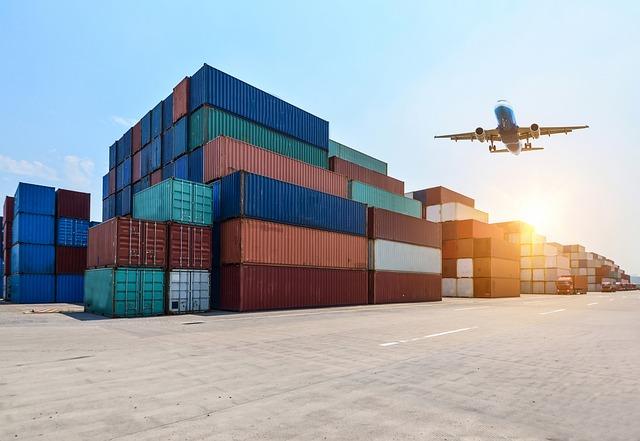In the heart of South Asia, Pakistan stands at a crossroads, where the echoes of its rich history merge with the aspirations of a dynamic populace yearning for a brighter future. As the nation confronts the challenges of economic stagnation, high inflation, and a burgeoning youth demographic, the urgency for revitalization has never been more poignant. The path to prosperity is not merely a destination; it is an intricate journey that demands innovative strategies, forward-thinking policies, and inclusive growth. This article delves into the multifaceted landscape of Pakistan’s economy, exploring transformative approaches that can harness the country’s inherent strengths and propel it towards sustainable development. From bolstering key industries to fostering entrepreneurship and attracting foreign investment, the strategies outlined here offer a roadmap for revitalizing Pakistan’s economy and invigorating its potential for future prosperity. Join us as we navigate the complexities of this endeavor, illuminating the possibilities that lie ahead for a nation on the brink of economic resurgence.
Fostering Innovation and Entrepreneurship to Drive Economic Growth
To effectively stimulate economic growth, it is crucial to establish a vibrant ecosystem that nurtures innovation and entrepreneurship. This can be achieved by fostering collaboration between academia and industry, where universities serve as incubators for new ideas and technologies. Government incentives a critical role in this environment, such as tax breaks for startups and grants for research and development projects. Additionally, creating innovation hubs that provide resources, mentorship, and networking opportunities can empower budding entrepreneurs to transform their ideas into successful businesses. Encouraging a culture of risk-taking and resilience is essential, as it can lead to groundbreaking advancements and sustainable economic progress.
An important aspect of cultivating entrepreneurship is ensuring access to capital for startups. This can be accomplished through various methods including establishing microfinance institutions and venture capital funds specifically aimed at nurturing innovative projects. Moreover, promoting technological literacy across all levels of society can contribute significantly to the entrepreneurial mindset. Incorporating entrepreneurship education into school curricula and community workshops can arm future generations with the necessary skills to innovate. fostering partnerships with international organizations can facilitate knowledge transfer and expose local entrepreneurs to global markets, creating a flourishing atmosphere for economic growth.

Enhancing Infrastructure and Connectivity for Sustainable Development
As Pakistan strides towards a more sustainable future, investing in robust infrastructure and seamless connectivity emerges as a pivotal strategy for economic revitalization. Modernizing transport networks, telecommunications, and energy resources can significantly reduce operational costs for businesses while enhancing accessibility for communities. Key elements of this transformation include:
- Development of Multi-Modal Transport Systems: Integrating rail, road, and air transport can help ensure efficient movement of goods and people.
- Smart City Initiatives: Implementing technology in urban planning to enhance resource management and improve the overall quality of life.
- Renewable Energy Projects: Fostering green energy solutions to supply sustainable electricity and reduce reliance on non-renewable sources.
Moreover, facilitating digital connectivity is crucial for promoting entrepreneurship and attracting foreign investment. With a strong internet infrastructure, local businesses can penetrate global markets, while citizens gain access to educational resources and job opportunities. Essential strategies include:
- Expanding Broadband Access: To connect remote areas and reduce the digital divide.
- Implementing E-Government Services: streamlining administrative processes and enhancing transparency.
- Promoting Tech Hubs: Supporting innovation through incubators and access to venture capital.

Investing in Human Capital: Education and Skills for a Competitive Workforce
In a rapidly changing global economy, investing in the capabilities of the workforce is paramount. Education systems must be redesigned to equip individuals with not only theoretical knowledge but also practical skills that meet industry demands. This includes enhancing vocational training programs and integrating technology-focused curricula that emphasize critical thinking and problem-solving. As such, fostering partnerships between educational institutions and businesses can ensure that students are prepared to tackle real-world challenges effectively.
Moreover, continuous learning and development should be prioritized as essential components of a competitive workforce. Lifelong learning initiatives can help individuals adapt to evolving job markets, especially in sectors such as information technology, healthcare, and renewable energy. Policymakers and business leaders can collaborate to create programs that support upskilling and reskilling efforts, encouraging a culture of innovation and adaptability. To illustrate this commitment, here’s a simple overview of key skills for emerging industries:
| Industry | Essential Skills |
|---|---|
| Information Technology | Programming, Cybersecurity, Data Analysis |
| Healthcare | Patient Management, Telemedicine, Biotechnology |
| Renewable Energy | Energy Efficiency, Technical Maintenance, Environmental Science |

Diversifying Exports and Strengthening Trade Partnerships for Economic Resilience
In an era of global economic shifts, diversifying exports has become pivotal for fostering resilience within Pakistan’s economy. By tapping into new markets and product lines, the nation can mitigate risks associated with overreliance on specific sectors. Key strategies to pursue include:
- Identifying Emerging Markets: Conducting research to pinpoint high-demand regions and products can unlock new avenues for trade.
- Enhancing Quality Standards: Focusing on improving the quality of goods to meet international standards will enhance competitiveness.
- Leveraging Digital Platforms: Utilizing e-commerce to reach international customers directly can expand market access significantly.
Alongside export diversification, strengthening trade partnerships remains essential for economic stability. By building robust relationships with countries that share common trade interests, Pakistan can enhance its bargaining position. Consideration should be given to:
- Engagement in Regional Trade Agreements: Actively participating in forums like SAFTA can foster closer economic ties within South Asia.
- Public-Private Collaborations: Encouraging joint ventures between local and foreign enterprises can stimulate investment and innovation.
- Trade Promotion Initiatives: Organizing trade fairs and business summits can showcase Pakistani products and attract foreign buyers.
Closing Remarks
As we stand at the crossroads of opportunity and challenge, the revitalization of Pakistan’s economy emerges as a pivotal journey requiring both vision and action. It is in the hands of our policymakers, entrepreneurs, and citizens to weave together the threads of innovation, sustainable practices, and inclusive growth. The strategies outlined here are not merely blueprints; they are calls to action, urging us to embrace a collective pursuit of prosperity.
Whether through leveraging technology, reimagining agricultural practices, or fostering a robust entrepreneurial ecosystem, each step we take can lead us closer to a vibrant and resilient economy. The path ahead will undoubtedly be fraught with obstacles, but it is also rich with potential—a canvas yet to be painted with the colors of commitment, collaboration, and creativity.
As we look towards the future, let us remain steadfast in our resolve to nurture a Pakistan that thrives economically, socially, and environmentally. Together, we can cultivate an ecosystem where prosperity is not just a dream, but a shared reality for generations to come. The time to act is now; the future of Pakistan’s economy awaits our courageous strides forward.



